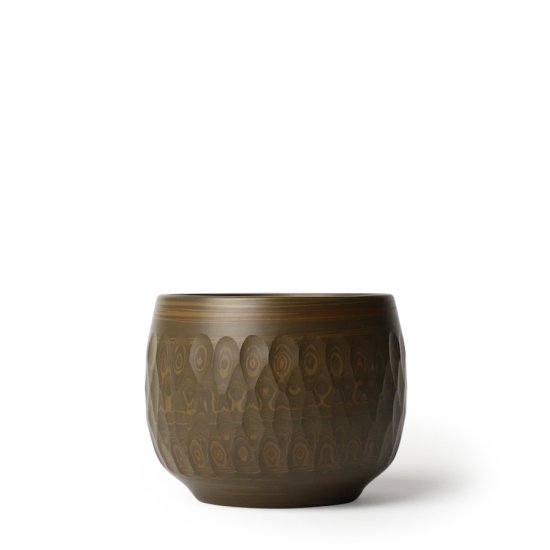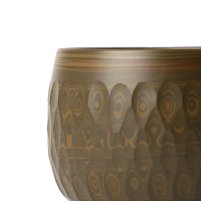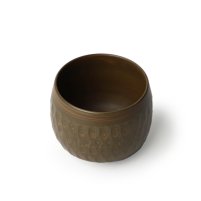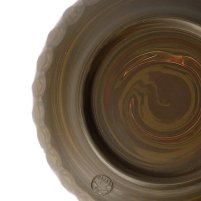The decorative Nerikomi "kneading" technique involves pressing different coloured clays together to create a block of multicoloured clay that is then shaped on the wheel to create unique, eye-catching ceramics. Clays can be carefully arranged to form elaborate geometric patterns, or randomly kneaded for a marbled effect that can be further enhanced by fluting: cutting grooves into the surface.
Teacup Tokoname
Nerikomi Green
Yusen
SKU
1621
Yoshi En has recently grown out of Sunday Natural to become an independent premium tea store. As part of this transition, some products may still be shipped in Sunday Natural packaging.
A beautiful piece of green Ryokudei Tokoname-yaki, this one-of-a-kind teacup is handcrafted by Yūsen II using his signature Nerikomi marbling technique combined with fluting for added layers of colour and texture. Suitable for serving all types of Japanese green tea.















